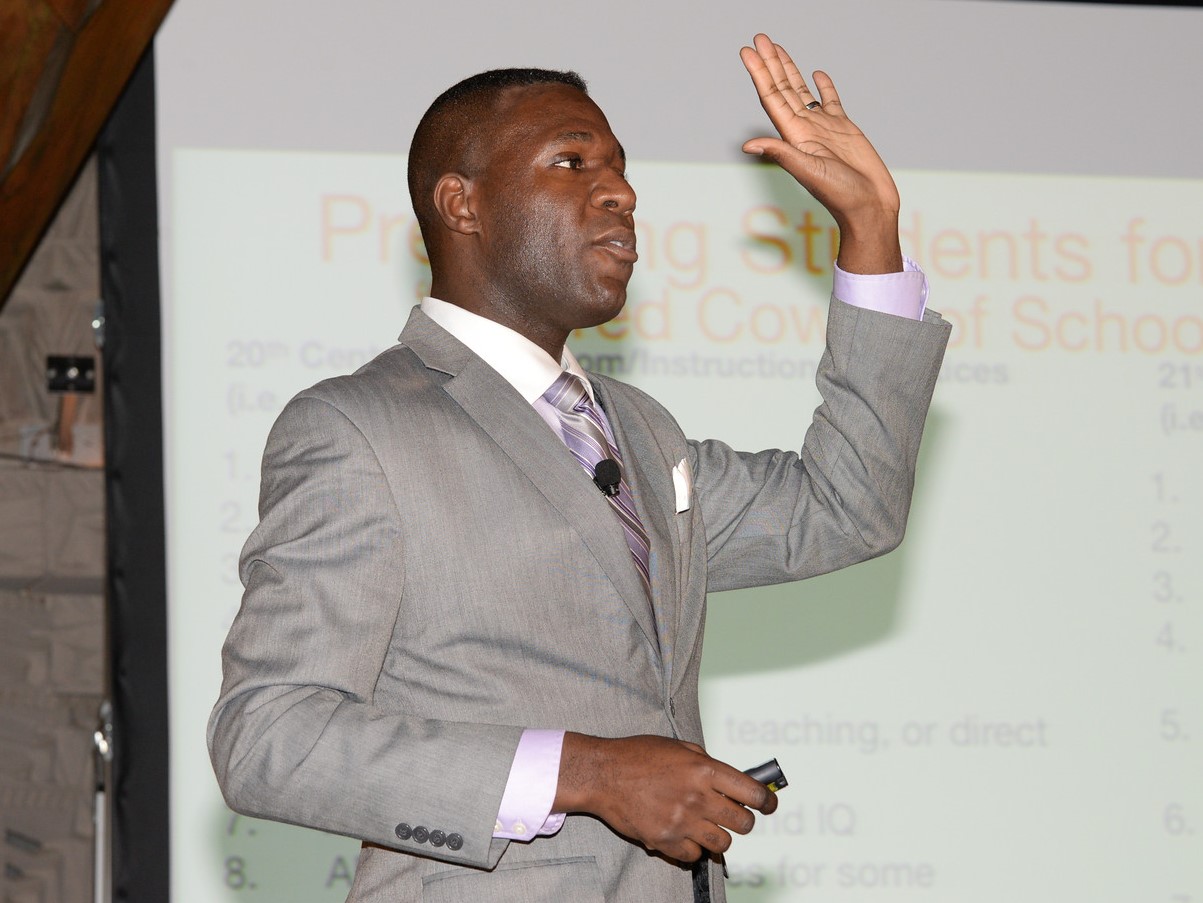
By: Art McCoy
Growing up, my parents dealt with significant disabilities. Yet, both instilled in me two truths that would empower me through school and life. First and foremost, thinking brains rule the world. Secondly, excellence is not automatic, but developed through perseverance. Through music and math, mentors and the right mindset, these two truths helped me develop a lifelong love of learning.
It was not a coincidence that I loved music and played the drums and piano at an early age. My mother was a church organist and minister for many years.Up until the week of my birth, she bounced me in her womb as she played gospel tunes on the organ and sung spiritual hymns.
In elementary school, math classes were at times painful. Classes too often focused on worksheets, drills, and a lot of bookwork. The content was impersonal. I completed tasks out of compliance. Little motivated me at that time to put forth my best efforts in my studies.
It was not until middle school that I bonded with my math and science teachers. They worked with me after school to learn my interests and potential. They connected mathematics to music to explain harmony, symmetry, different time signatures, patterns from sound waves, and trends. More than ever, these teachers did not tell me the correct answers or what to think; instead, they taught me how to view math as the language of science, nature, and life. Music led me to love math and logic. I learned how to connect what I knew about music to math and what I was learning about math to logic and life. By high school in the 1990’s, I knew how to use acrostic poems, patterns, and sequences as a method for studying and committing things to memory. At that same time, the late Dr. Gordon Shaw and his colleague Dr. Mark Bodner were leading the grounding-breaking research that defined MIND Research Institute: forming research-based methods to perform this same memory patterning for hundreds of thousands of students.
In 10th grade, I was accepted in a national program called Inroads with the support of my 10th grade math teacher. My teacher mentioned that I could become a great engineer or actuary. My career inventory test validated this point. Nearly four years later, after completing my bachelor’s degree, I had a job offer as an actuary with a large firm in Chicago. But after one visit to my new cubical to look at mortality tables, I chose to return to my community to build bridges supporting other young people in math, education, and leadership. I couldn’t get out of my mind the people in my neighborhood who were poor, who didn’t have a car or the best education. Like my mentors, I had a mindset to do something on the front end of this and not the back end.
At age 19, I became a certified high school math teacher. It was my mission to make math relevant and serve as a role model and mentor to students. I moved up quickly through the administration and by age 33 I became the first African-American superintendent of schools for that district and the youngest in the state, overseeing 13,000 students and a $150 million budget.

I have served over 100,000 students as an educator, school and district leader, and university professor. I have spearheaded programs focused on career and college readiness including: soft skills training, advanced manufacturing college courses, jobs through Jobs for America’s Graduates and the Workforce Investment Act, financial literacy, STEM teacher preparatory programs, principalship and superintendent degree programs, policy studies, and urban reform. This is a result of embracing the right mindset and the help of many mentors.
Today, as MIND’s Chief Academic Officer and Superintendent-In-Residence with cross-departmental responsibilities, I aim to use my experience to provide greater synergy to the efforts of engineering, education success, engagement, and philanthropy in an effort to further scale our programs and services, as well as serve as an MIND emissary nationwide. What excites me most is the possibility of taking the work of Dr. Shaw, Dr. Mark Bodner, and Dr. Matthew Peterson to millions of students; to introduce deep thinking and grit through gaming technology, Spatial-Temporal (ST) Math and JiJi; and to be part of a learning revolution that leads to excellence in math, school, and life.
It is a joy to work for a social benefit organization that helps all children, from the gifted spectrum through accelerating learning, metacognition, induction and deduction to children with great obstacles created by poverty, language barriers, and learning difficulties and disorders. Hundreds of thousands of students experience an achievement in math and problem solving that fosters adaptability, perseverance and – most importantly – a love of learning. Equipped with these skills, the children will embark on a path of excellence that extends through high school, college and into tomorrow’s competitive knowledge economy. Just as with me, their lives will be empowered for success through the work we do to provide a proven, innovative solution, and rich experiences that instill the right mindset.

MIND Research Institute welcomes guest blogs that highlight best practices in math education, blended learning and innovative learning strategies that inspire students at all ages.
Comment